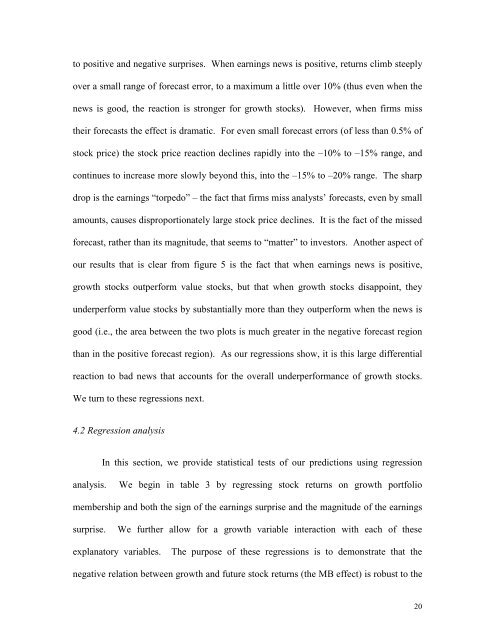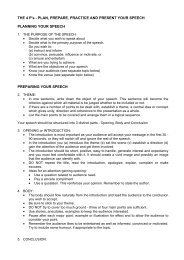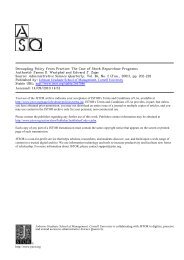Earnings Surprises, Growth Expectations, and Stock Returns:
Earnings Surprises, Growth Expectations, and Stock Returns:
Earnings Surprises, Growth Expectations, and Stock Returns:
You also want an ePaper? Increase the reach of your titles
YUMPU automatically turns print PDFs into web optimized ePapers that Google loves.
to positive <strong>and</strong> negative surprises. When earnings news is positive, returns climb steeply<br />
over a small range of forecast error, to a maximum a little over 10% (thus even when the<br />
news is good, the reaction is stronger for growth stocks). However, when firms miss<br />
their forecasts the effect is dramatic. For even small forecast errors (of less than 0.5% of<br />
stock price) the stock price reaction declines rapidly into the –10% to –15% range, <strong>and</strong><br />
continues to increase more slowly beyond this, into the –15% to –20% range. The sharp<br />
drop is the earnings “torpedo” – the fact that firms miss analysts’ forecasts, even by small<br />
amounts, causes disproportionately large stock price declines. It is the fact of the missed<br />
forecast, rather than its magnitude, that seems to “matter” to investors. Another aspect of<br />
our results that is clear from figure 5 is the fact that when earnings news is positive,<br />
growth stocks outperform value stocks, but that when growth stocks disappoint, they<br />
underperform value stocks by substantially more than they outperform when the news is<br />
good (i.e., the area between the two plots is much greater in the negative forecast region<br />
than in the positive forecast region). As our regressions show, it is this large differential<br />
reaction to bad news that accounts for the overall underperformance of growth stocks.<br />
We turn to these regressions next.<br />
4.2 Regression analysis<br />
In this section, we provide statistical tests of our predictions using regression<br />
analysis. We begin in table 3 by regressing stock returns on growth portfolio<br />
membership <strong>and</strong> both the sign of the earnings surprise <strong>and</strong> the magnitude of the earnings<br />
surprise. We further allow for a growth variable interaction with each of these<br />
explanatory variables. The purpose of these regressions is to demonstrate that the<br />
negative relation between growth <strong>and</strong> future stock returns (the MB effect) is robust to the<br />
20







